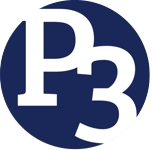
Equitable Outreach
When creating a public engagement plan, we analyze the demographics of a project area to determine who we will need to reach throughout the project duration. We don’t have just one method of conducting public outreach; we plan and enact an equitable outreach strategy that fits the needs of the specific project and audience.
We have found that the people who are not plugged in to existing lines of communication with their local government or who seem to “not care” are often times the individuals who will be most impacted by a project. They often do not understand why they should care.
Harder-to-reach populations are those groups that are more difficult to contact and engage through traditional engagement methods.
These groups may include people with limited English proficiency, immigrants, religious minorities, indigenous groups, senior citizens, youth, people with disabilities, renters, new residents in a community, or those that are not a part of organized groups. Harder-to-reach groups may also include minority populations that are disproportionately affected by project impacts, and therefore hearing their perspectives is critical to minimize adverse impacts as much as possible.
We conduct targeted outreach to help notify and engage these groups who have been historically and traditionally underrepresented. Our methods include, but are not limited to:
These groups may include people with limited English proficiency, immigrants, religious minorities, indigenous groups, senior citizens, youth, people with disabilities, renters, new residents in a community, or those that are not a part of organized groups. Harder-to-reach groups may also include minority populations that are disproportionately affected by project impacts, and therefore hearing their perspectives is critical to minimize adverse impacts as much as possible.
We conduct targeted outreach to help notify and engage these groups who have been historically and traditionally underrepresented. Our methods include, but are not limited to:
- Seeking out representatives of community groups or organizations that serve an affinity group to ask for help in distributing information.
- Providing alternatives to electronic participation for those who do not have access or skill with technology.
- Providing easy access to translated materials for those with limited English proficiency.
- Building lasting relationships with community groups and continuing to involve them in projects that impact their communities.
Effective communication strategies consider the diversity of the audiences that they attempt to reach. We work to ensure communications to the public are clear about the importance of participating in projects efforts and what the potential impacts of the project may be.
When creating communications for public outreach, we consider:
Ultimately, our communications strategy for public outreach will seek to be as accessible as possible to help create equitable outcomes.
When creating communications for public outreach, we consider:
- Americans with Disabilities Act (ADA) compliance for visual materials (digital and print).
- Measures to ensure comprehension for those with limited English proficiency, such as translated materials and materials written at an understandable reading level.
- Accessibility of online materials, including whether platforms are mobile-friendly and if hardcopy versions of materials are needed for those without access or skill with technology.
- Representation of diverse peoples in project photos, graphics, and videos.
Ultimately, our communications strategy for public outreach will seek to be as accessible as possible to help create equitable outcomes.
The success of a project is not only in project outcomes, but also in the relationships formed between the public and agencies. These relationships should be mutually beneficial and not just another request for public input.
During public engagement opportunities, we provide the public with information on what they will get out of the public engagement process and the project rather than just asking for what we need from them.
We also work to open channels of communication between stakeholder groups, the public, and the agency or firm through acts of transparency. Through transparent documentation, providing information about how public input was used in decision-making, and keeping the community engagement promises made, we seek to build trust in the public engagement process and in each project’s client.
During public engagement opportunities, we provide the public with information on what they will get out of the public engagement process and the project rather than just asking for what we need from them.
We also work to open channels of communication between stakeholder groups, the public, and the agency or firm through acts of transparency. Through transparent documentation, providing information about how public input was used in decision-making, and keeping the community engagement promises made, we seek to build trust in the public engagement process and in each project’s client.

